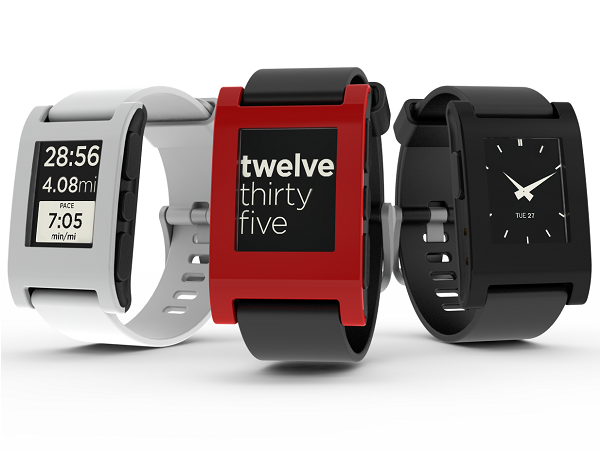What is a Smartwatch?
A smartwatch is a wearable device that gives users access to their email, messages, news alerts and more.

While there is no commonly accepted definition of the term, a smartwatch, generally speaking, is a multipurpose device, usually worn on the wrist, that runs computing applications. With a smartwatch a user could have access to news, weather, sports, stocks, horoscopes, email and more.
The near-universal understanding of a smartwatch is that it leverages a wireless technology to communicate with your smartphone. Smartwatches are designed to network and integrate with other personal devices through Wi-Fi and Bluetooth technology. They are not designed to be cell phone replacements, as they're meant to provide alerts for messages and missed calls, but don't necessarily possess the capability to make or receive calls.
Microsoft initially developed smartwatch technology and introduced Smart Personal Object Technology, or SPOT, in 2002. This self-contained device received news headlines and alerts via an FM radio service, MSN Direct. This, however, was a major failure, as MSN Direct required a subscription fee that most weren't willing to pay and didn't offer enough capabilities to keep consumers happy. Since then, technology pioneer Pebble redefined the idea of a smartwatch when it entered the market and raised $10 million on Kickstarter. Other companies, like Google and Apple, have since followed suit and are developing their own smartwatches.
In order to work with phones, smartwatches each work on different operating systems. Some are designed for Android only, whereas others work with Androids and iPhones. They all offer a wide variation of functions, where some will only alert you when a new text or email comes through, and others will allow you to read them. Some smartwatches offer social media functionality, and some offer calendar functions. But this depends on the manufacturer and model.
The smartwatch trend is poised to take off and revolutionize the consumer technology market. According to Canalys, over five million smartwatches will ship worldwide in 2014. That's a big jump from the 330,000 smartwatches shipped in 2012 and the estimated half million to be shipped in 2013.
Part of this projected success is due to the potential in the smartwatch industry. The wearable computer trend can serve as a hub for other "smart" devices that are worn, like heart-rate monitors and smart glasses. These can be turned into fully integrated medical systems. The GlucoWatch Biographer, for example, reads glucose levels and is designed to aid diabetics who need constant monitoring.
Smartwatches can also use biometric readings to identify users, tightening mobile device security. Bionym has introduced a sensor that tracks a user's heartbeat through biometric recognition systems and can communicate the information to other connected devices. A phone that normally requires a password would automatically be unlocked when brought into the range of the user's wrist.
Samsung just revealed its Samsung Galaxy Gear to much fanfare and excitement, and is designed to work with Samsung's critically acclaimed smart phones. The built-in camera and pedometer, plus music control, makes it an excellent first foray for Samsung into the smartwatch market. Qualcomm's Toq is expected to hit shelves in October with a price tag around $300. The thin device uses a display similar to e-ink, but can also produce colors and run video. Other contenders include the Apple iWatch, which is still in the prototype phase, and the Sony Smartwatch 2.
One major player is the Pebble smartwatch, which works under Android OS and can send and receive SMS messages. With built-in GPS navigation, music controlling options, and a camera, the Pebble smartwatch, which can be purchased at Best Buy, is trying to gain a foothold before the market giants have a chance to sell their developed products. So far, they've been very successful, with over 275,000 sales.
It's too soon to tell the exact success of the smartwatch, but it's hard to ignore the hype. The idea of being even more connected to our devices is extremely attractive to many consumers, and the biometric and health metering capabilities alone could save lives and improve the quality of life for many.
Sign up to get the BEST of Tom's Guide direct to your inbox.
Get instant access to breaking news, the hottest reviews, great deals and helpful tips.
Tom's Guide upgrades your life by helping you decide what products to buy, finding the best deals and showing you how to get the most out of them and solving problems as they arise. Tom's Guide is here to help you accomplish your goals, find great products without the hassle, get the best deals, discover things others don’t want you to know and save time when problems arise. Visit the About Tom's Guide page for more information and to find out how we test products.
-
agnickolov A smartwatch is simply a computer strapped on your wrist. Just like a smartphone is a computer you carry in your pocket.Reply
With that said, I'd rather wait until they produce smartwatches designed to eliminate the need for a smartphone. -
CrArC No mention of the Omate TrueSmart? Disappointing... especially since it's one of few watches right now which is capable of working WITHOUT needing a smartphone.Reply
Their Kickstarter campaign has less than 51 hours remaining! If you want a "full featured" smartwatch for less than the Galaxy Gear and Sony Smartwatch, now would be the time. -
CrArC @ agnickolov - sorry didn't read your comment before posting! There is one such watch on Kickstarter right now: http://www.kickstarter.com/projects/omate/omate-truesmart-water-resistant-standalone-smartwaReply
-
gm0n3y I'm still not sold on the whole 'smartwatch' idea. Email and text message notifications aren't really worth having to wear a watch. Until it gives some useful functionality that I can't get on my smartphone I just don't see the reason. As a fashion statement, or for those that receive a large number of text/email in a day, I can see some utility. But for the vast majority of people it just doesn't make sense, especially with Google Glass just around the corner.Reply -
lathe26 Another reason the Microsoft SPOT watch failed: it was as big as a Fred Flinstone sundial. Because of that, only some men wanted to buy it and no women. Watches are as much about fashion as they are about functionality. I am not convinced that the new watch manufacturers have learned this lesson.Reply -
hector2 Just give me a nice watch with a nice LCD screen and big font with a calculator function for <$50. I'll use a cell phone, tablet or laptop for the restReply -
V338 I have a pebble and it does just what I want, screen calls and texts without having to pull out phone, unlock it etc. Lasts a week between charges, can swim with it. I have a Droid Maxx and it keeps it unlocked as a trusted device very cool.Reply -
prand903 Start working at home with Google. It’s the most-financialy rewarding I've ever done. On tuesday I got a gorgeous BMW after having earned $7439 this last month. I actually started five months/ago and practically straight away was bringin in at least $74, per-hour. visit this site right here Pow6.comReply

